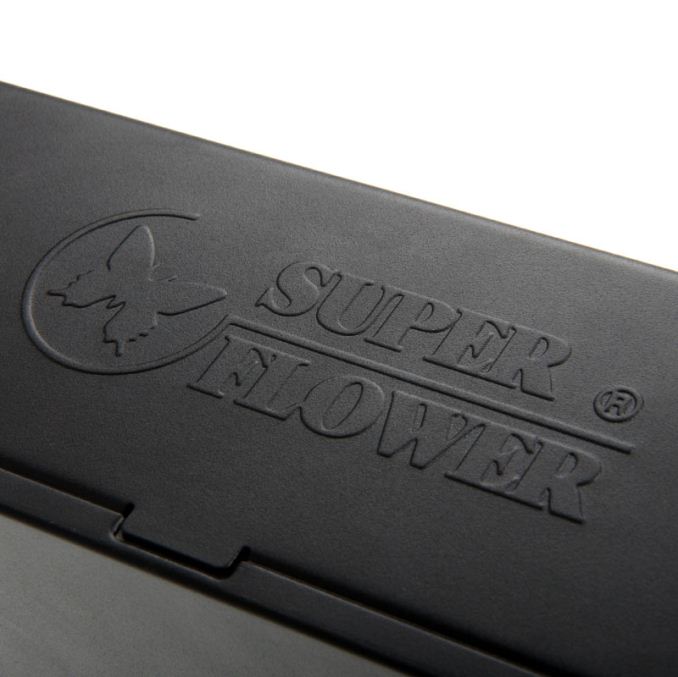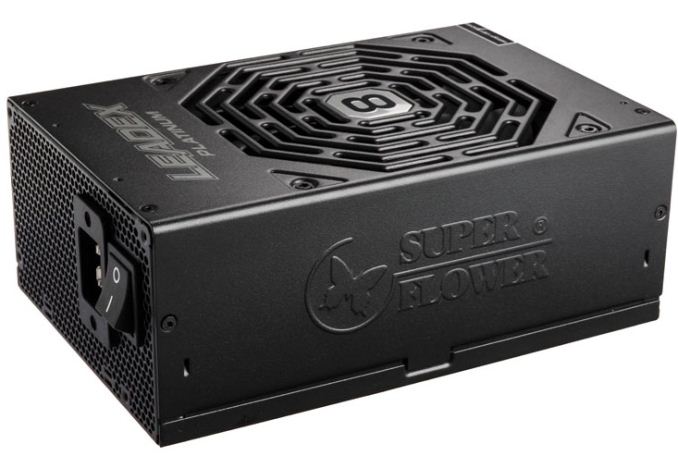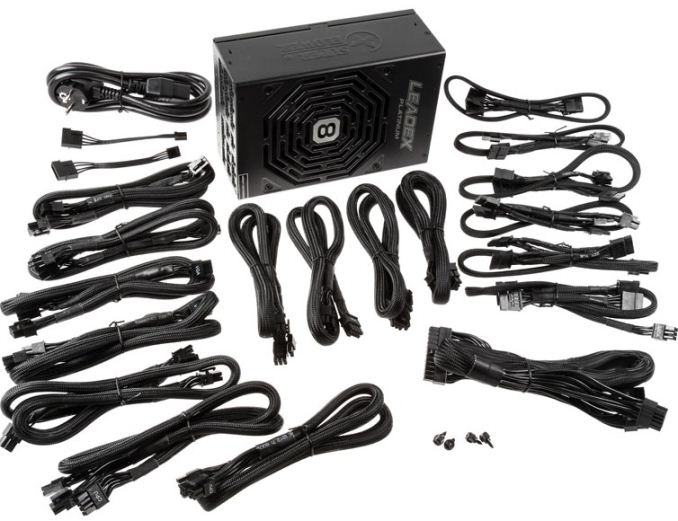Super Flower & 8Pack Release the World's First 2kW Consumer PSU
by E. Fylladitakis on January 30, 2015 2:30 PM EST- Posted in
- Cases/Cooling/PSUs
- Super Flower
- 2000W
- leadex

A new record was broken today, as Super Flower announced the release of the most powerful consumer PSU ever made, the Leadex Platinum 2000W. The PSU has been allegedly developed with the collaboration of Ian "8Pack" Parry, one of the most reputable overclockers worldwide, and in association with OverclockersUK.
The power specifications of this monster are certainly impressive. It is 80Plus Platinum certified and the single 12V rail that can output up to 166.6A, implying a certain fire hazard if that current were to be drained from a single connector. It also sports a fully modular design, which is a good thing for a PSU with twenty cables. The choice of a simple dual ball bearing 140mm fan is questionable for a product with such a price tag, but it obviously is not primarily designed with low noise operation in mind.
Huge numbers are certainly impressive, but let us also remember that the power requirements of a typical gaming PC hardly are a quarter of what this monster can output. Not even highly advanced multi-GPU systems require such power. Simply put, if you own anything less than an overclocked system with four GPUs, this product has nearly zero practical value. For example, in Ian's dual X5690 system with four AMD 7970 GPUs, he pulled 1550W with some basic overclocks on a 1600W PSU, meaning that a full sub-zero OC system has room to breathe with 2000W at hand.
With computer PSUs, bigger is not necessarily better, as the efficiency of the unit peaks at about 50% of its maximum power rating and declines if the load decreases or increases. Actually, due to their design, the efficiency of most switching PSUs plummets if the load is lower than 20% of the unit's rated capacity. Therefore, buying a very powerful PSU in order to have "better performance" and "headroom" is not always such a good idea, but for those who need it, 2000W could have practical applications.
Source: OverclockersUK












65 Comments
View All Comments
doctoerobelix - Sunday, February 1, 2015 - link
Poik is right about the 80% load.Typically consumer product don't allow more then 12amps or 1400watts to be used on a 15 amp circuit.
We can talk UL, NEC, or electrical code standards all day but the fact as they don't normally make consumer product consumer more then 80% of an outlets rated power and the market has settled on this ages ago.
I think this is buried somewhere in the NEC code about "100% capacity' means 80% load, but I don't remember.
Legacy reasons for this such as old electrical wiring and panels (fused) that can't handle these loads come into play.
But there are also practical limits on how long the load can be sustained at max amperage due to the heat caused by the gauge and type of wiring, housings, and sockets.
We've run up against this issue in our products (firewalls) , even though they are in a data-center if they need 1500 or more watts then we put a C20 connector on the back of the system and supply a 20 amp (nema 5-20) to the customer in 120 volt areas.
I look at this not from an electrician side of things but from someone in the hardware/mfg chain who has to help build these products going out to various world markets.
It is amazing how much flak we get from product mgmt/marketing when they find out a customer won't buy one of our product because it means they would have to get a new circuit run.
Coup27 - Sunday, February 1, 2015 - link
All of this would be a non issue if the US used ~230v like nearly everybody else. :-pdananski - Saturday, January 31, 2015 - link
So does that mean you can't have electric heaters, vacuum cleaners or kettles that go over 2kw? Sounds a bit unlikely.tmarks11 - Saturday, January 31, 2015 - link
Find me a space heater that plugs into a 120V socket that is rated over 1500 watts.They don't exist!
Vacuum cleaners typically pull 8-11A (960-1320W). Never seen a residential vacuum cleaner any larger than that.
Kettles? Give me a break, most of those are more like 800-900W.
stephenbrooks - Saturday, January 31, 2015 - link
The cord in the picture looks European. In the US, it might be possible to plug this using one of the alternative plugs for higher currents like NEMA 5-20 (or 14-30 or 14-50) instead of NEMA 5-15. I have some of the 5-20 (20A) plugs near my windows, intended for air conditioning units.PrinceGaz - Saturday, January 31, 2015 - link
Although 110V may be safer, the 230V we have in Britain with normal sockets rated to deliver 13A is far preferable. 3kW kettles are commonplace in most homes, and even the cheapest kettles on sale are rated no lower than 2kW. How long do you wait to boil water for cups of coffee in America with those 800-900W kettles?A cheap fan heater will be another at least 2kW item, with 3kW models widely available and certainly preferable if you need to quickly warm up a larger room. Washing machine? Yes, another 3kW device whilst its heating the cold water at the start of the cycle that plugs into our standard 13A socket.
3kW devices are quite common in Britain, so this 2000W output PSU would be perfectly fine here, because it will take under 2300W from the wall as it achieved a 80+ Platinum rating. The only real problem I foresee is cooling; not so much the computer but your home. The continuous 2kW+ of heat it produces at near full load means you'll be opening the windows even in winter.
Alexvrb - Saturday, January 31, 2015 - link
Even a regular coffee maker doesn't take too long but my Keurig-compatible unit spits out coffee pretty damn quick. :Plothar98 - Saturday, January 31, 2015 - link
Spend 3 sec on Google and you find 1875w as a fairly common size for a hair dryer.Murloc - Sunday, February 1, 2015 - link
it's a hybrid Schuko with support for both German and French grounding systems (the hole is for the french sockets, while the two contacts on the side are for german sockets).Brett Howse - Friday, January 30, 2015 - link
I suppose anyone needing this much power will know this, but the standard NA wall socket can't deliver this much power. You'll have to run your computer in your kitchen with 20A plugs!